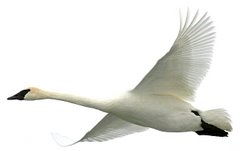nature photography with a 50+ yr. old lens on a Leica M9
Recently a friend loaned me a couple of Leica lenses more than 50 yrs. old. Of course I had to try them out. After using them in bad indoor light with pretty good results, I decided to take one of them (135mm Hektor f/4.5) outdoors. Today we finally got a warmish, sunny day and I went to Springbrook Nature Center, in Fridley, where I've taken many bird photos with my Canon bodies & lenses. How would a 50+ year uncoated and slow 135mm lens compare to current 400mm telephotos? All of the photos were shot wide open at f/4.5 with the ISO at 200 and shutter speeds from 1/750 to 1/2000. The camera body was a Leica M9.
Click on any photo to enlarge.
First, the bad news.
This is a crop of less than 8% of full frame. Yes, it's a warbler -- but that's about all you can say for it. By the way, it is incredibly difficult to shoot fast-moving, restless warblers with a rangefinder, manual focusing camera. The old Hektor also has an extremely long focus travel, which does not help.
More bad news.
This is about a 5% crop of the full frame. The teal-colored branches are interesting and caused by severe chromatic aberration when shooting into a light source, such as the sky here. These old lenses were not coated. Not too many people worried about color fringing in 1950 -- most photos were black & white. What could I do with this severe crop and false color? I increased the saturation to the max hoping to get some kind of psychedelic effect. I think I failed.
Better news.
This, in my opinion, is passable. About 1/8 of full frame. Considering all factors, I am impressed by the sharpness and color of an uncoated Leitz lens after 50+ years.
Good news.
Now we are getting into pretty good territory. This is about 1/6 of full frame and very good, in my opinion.
As we approach 1/2 frame or lesser crops, the old Hektor hitting Leica's full frame sensor shines.
Isn't it amazing what sharpness & color one can get out of a 50-year old lens? The trick is to get close enough to your subject so that you can utilize 1/2 of more of full frame. That's fine for ducks & geese, but for warblers and shy birds I'll have to hang on to my Canon gear.










